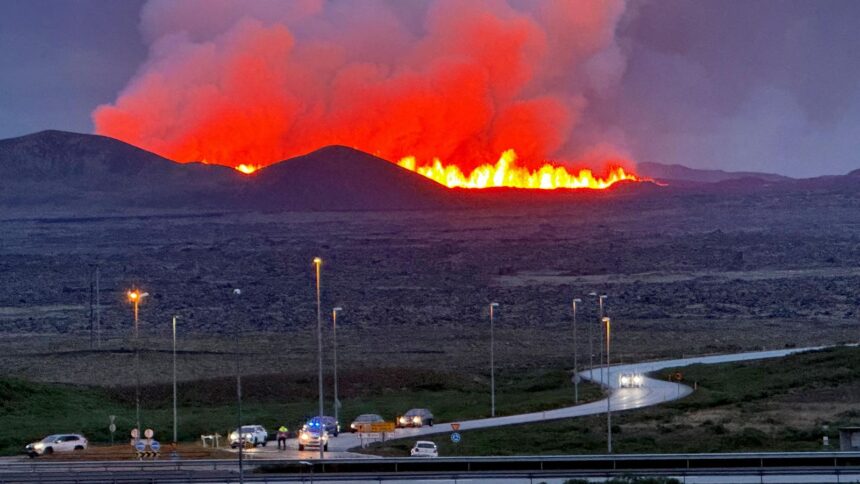This is the sixth eruption since December on the Reykjanes Peninsula in southwest Iceland.
Days before the volcano erupted, the meteorological office in Iceland noted a rise in seismic activity and tremors near the volcanic hill known as Sundhnukar.
Nearby, at the Sundhnukagígar crater north of Grindavik, a sizable fissure has opened up, with lava flowing in both directions.
The national meteorological office estimates that “the lava flow has traveled about 1km in 10 minutes.”
Additionally, experts reported that the fissure had elongated by 1 mile (1.5 km) in around 40 minutes, totaling about 2.42 miles (3.9 km).
Recent research revealed that magma was building underneath, which prompted alerts about fresh volcanic activity in the region south of Reykjavik, the capital of Iceland.
Since roughly 4,000 people of the adjoining town of Grindavik were initially told to flee in late last year, the community has been completely abandoned.
To divert lava flows away from vital infrastructure, such as the Svartsengi power plant, the Blue Lagoon outdoor spa, and the town of Grindavik, authorities have built man-made barriers.
The Svartsengi neighborhood has also been evacuated, and the well-known Blue Lagoon geothermal spa has been shuttered.







